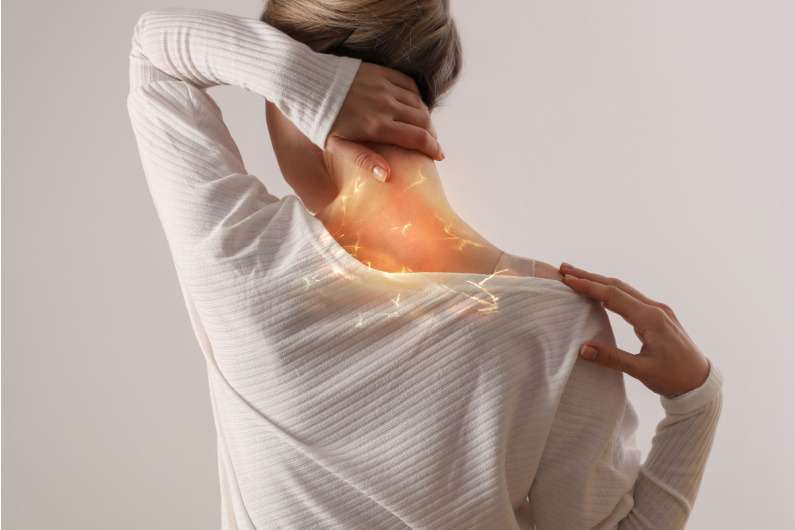You’ve probably heard of myelopathy and radiculopathy, but you may not know what they mean. Myelopathy is more commonly known as spinal compression, a pinched spinal cord, or spinal cord compression. Radiculopathy, on the other hand, is most often referred to in common parlance as a pinched nerve, herniated disc pain, or sciatica.
It’s important to note that some of these common terms are not necessarily accurate. For instance: Myelopathy is a symptom associated with compromise of the spinal cord, while radiculopathy is linked to nerve pain originating from a specific nerve root. As a result, radiculopathy can manifest in the cervical, thoracic, lumbar, or sacral regions.
Read on to learn more about the myelopathy vs radiculopathy symptoms, causes, and treatments.
Comparing & Contrasting Radiculopathy vs Myelopathy
Rather than comparing specific types of myelopathy and radiculopathy, such as cervical myelopathy vs radiculopathy or lumbar myelopathy vs radiculopathy, below, you will find an overarching comparison between radiculopathy and myelopathy, writ large.
Just be aware that these general overarching descriptions can be applied to more specific sub-types of these conditions, such as:
- Cervical radiculopathy and myelopathy (compression of the spinal cord in the neck)
- Thoracic radiculopathy and myelopathy (a pinched nerve in the upper back)
- Lumbar radiculopathy and myelopathy (compression of the spinal cord in the lower back)
Myelopathy
Here’s what you should know about Myelopathy, or spinal cord compression
- Causes: Bulging or herniated discs, bone spurs, spinal trauma, spinal arthrisis (spondylosis), tumors or abnormal growths, and other changes in the spine that result in compression.
- Symptoms: Stiffness or weakness in the legs (most common), persistent neck stiffness, an achy feeling in the neck, arm, or shoulder, numbness or tingling of the hands, weakness or clumsiness in the hands, balance issues, mild bowel or bladder function changes, electric-shock sensation down the spine when the neck is flexed forward, and weakness, muscle atrophy, and cramping in the lower extremities.
- Treatment: medication, physical therapy, or pain management for short-term mobility and pain relief. Long-term solutions may involve surgery to address the root cause of the problem and create space in the spinal canal.
Radiculopathy
Here’s what you should know about Radiculopathy, or a “pinched nerve”:
- Causes: Spine conditions such as spinal and/or foraminal stenosis, disc herniation, bone spurs, and spondylolisthesis.
- Symptoms: Pain, muscle weakness and/or numbness, or shooting pain in upper or lower extremities, depending on where your nerves are being pinched.
- Treatment: Nonsurgical (conservative) treatments involve over-the-counter NSAIDs like Aleve or Ibuprofen, along with physical therapy and pain management. In more severe cases, your pain management doctor may administer epidural shots to alleviate radicular pain. If none of the aforementioned treatments prove effective, surgery may be considered as a final option.
What is the Difference Between Myelopathy and Radiculopathy?
As Johns Hopkins Health pointedly puts it, “Myelopathy may sometimes be accompanied by radiculopathy. Radiculopathy is the term used to describe pinching of the nerve roots as they exit the spinal cord or cross the intervertebral disc, rather than the compression of the cord itself (myelopathy).”
Treat Your Spinal Pain With Desert Spine and Scoliosis Center
Curious about what’s causing nerve pain? At Desert Spine and Scoliosis Center, we are experts in diagnosis spinal conditions, and can help you with different treatment options. Contact us today to schedule a diagnostic appointment and experience relief from the frustration and pain you’re feeling.



Recent Comments